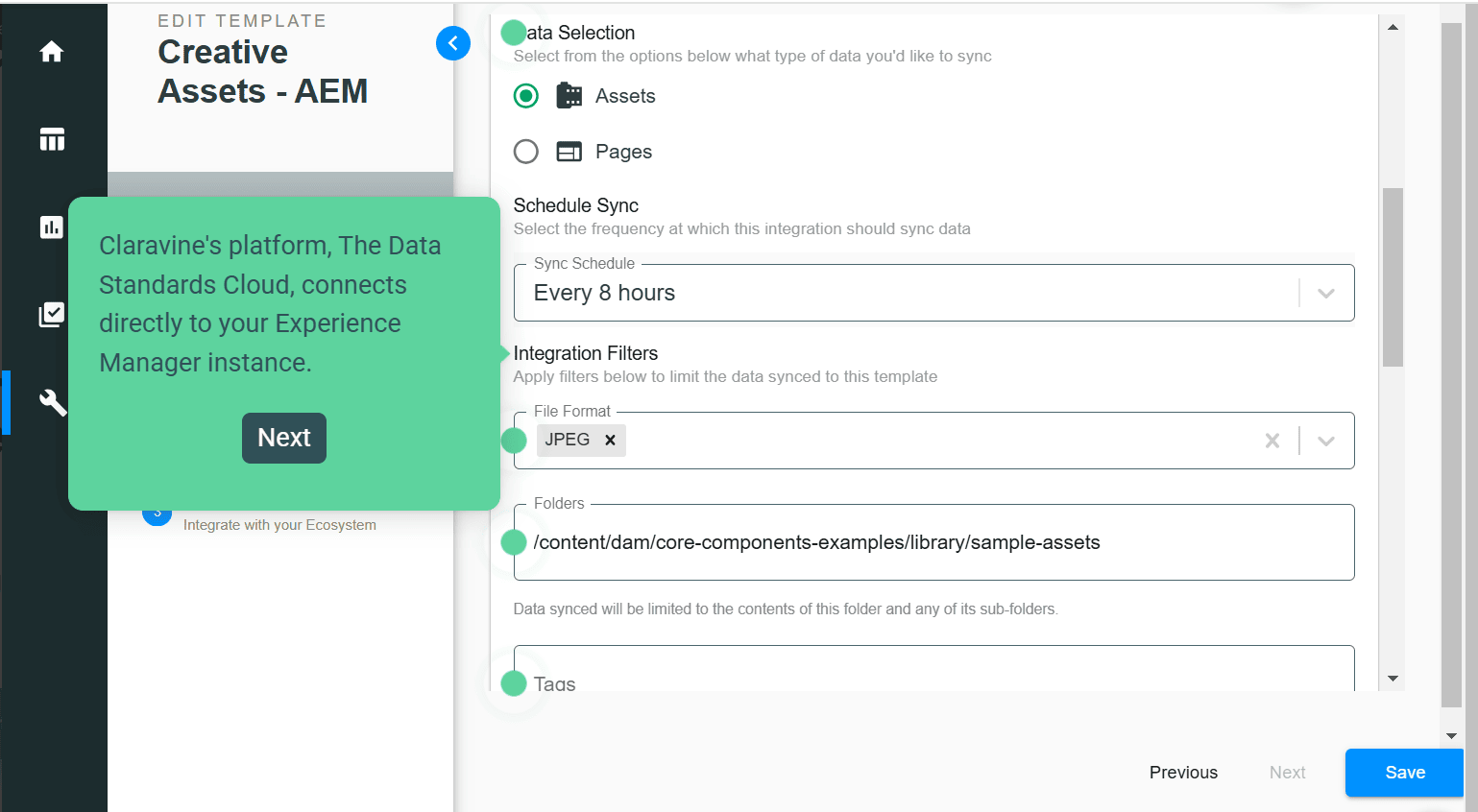What Is Digital Asset Management and Why You Need It Now

Every click, interaction, and transaction today generates a massive amount of digital content. This surge in digital assets—images, videos, documents, and rich media—has overwhelmed businesses, making it harder to manage and utilize these assets efficiently.
The Digital Asset Management software market is projected to expand to $8.2 billion by 2030, reflecting a growing need for structured solutions. Businesses are recognizing the urgent demand for tools that streamline the organization, storage, and retrieval of digital content while improving cross-team collaboration.
As companies handle an ever-increasing volume of digital files, they face challenges in managing, optimizing, and reusing these assets across marketing, creative, and operational teams.
Digital Asset Management systems offer a centralized solution to these problems, helping teams streamline the content lifecycle—from creation and collaboration to distribution and performance analysis.
In this blog we’ll explore how a Digital Asset Management platform, particularly one that emphasizes metadata management, can improve your team efficiency, and enhance brand consistency across every channel.
What is Digital Asset Management?
Digital Asset Management (DAM) is a powerful software solution that allows organizations to efficiently store, organize, manage, and distribute digital assets, including images, videos, documents, and more.
The key to a DAM system’s effectiveness is its ability to centralize assets in a single repository, making them easily accessible across different teams and departments. This eliminates the common problem of hunting through multiple folders and platforms to locate specific assets, allowing teams to work more efficiently and collaboratively.
Key features of DAM:
- Centralized repository: Provides a single, secure location where all digital assets can be stored. This ensures that teams have quick access to the most current files, reducing time spent searching for the correct version of an asset.
- Enhanced efficiency: Facilitates quicker retrieval and utilization of assets throughout their lifecycle.
- Collaboration tools: Supports teamwork with features like version control, annotation tools, and access permissions, ensuring that teams work with the most current files. This is important for maintaining consistency across projects and campaigns.
One key component of a successful DAM implementation is metadata.
Metadata is essentially ‘data about data,’ providing contextual information about each digital asset. Let’s explore metadata’s critical role in optimizing DAM systems and how it can help your organization.
Does Metadata Matter for Digital Asset Management?
Well-structured metadata drives efficient asset organization and retrieval within a Digital Asset Management system. It allows teams to develop a taxonomy that reflects their unique needs and workflows. This, in turn, facilitates quick and accurate asset discovery, as users can easily navigate through the taxonomy to find the content they need.
The role of metadata in an optimal DAM includes:
- Efficient organization: Metadata enables the logical categorization of assets. Using a taxonomy—a hierarchical system for organizing digital assets based on metadata—helps teams quickly sort and group files based on type, project, or other criteria. This structure simplifies navigation through vast amounts of content, improving productivity and minimizing time spent searching.
- Improved searchability: Metadata enhances search functionality by allowing users to filter assets based on specific metadata fields, such as keywords, tags, or file types. Instead of manually searching through files, users can instantly locate assets by referencing descriptive metadata like titles or associated projects. This approach improves workflow efficiency and reduces the need to open files to identify content.
- Management and compliance: Administrative metadata is key in ensuring that digital assets comply with internal policies and external regulations. Information such as creation dates, usage rights, and license information helps organizations track asset usage and ensure compliance with legal standards, protecting businesses from copyright or licensing risks.
- Enhanced asset relationships: Structural metadata clarifies the relationships between different digital assets, improving how teams access and manage related files. For instance, metadata can group assets from the same project or series (such as podcast episodes or marketing materials), making it easier to view all associated files at once.
- Technical specifications: Technical metadata provides information on file formats, resolutions, and other specifications of an asset, ensuring compatibility across various systems. This information helps teams decide how and where to use assets, whether for web, print, or video.
Benefits of well-structured metadata
The benefits of well-structured metadata extend beyond improved search and retrieval. Some of them include:
- Advanced search capabilities: Metadata enables faceted search and natural language processing, allowing users to filter and search more intuitively.
- Streamlined workflows: Proper tagging enhances collaboration, enabling quick content distribution and boosting efficiency.
- Legal clarity: Clear usage rights minimize the risk of legal disputes, safeguarding intellectual property.
- Enhanced collaboration: Metadata provides essential context, ensuring that cross-functional teams can access and use assets correctly.
- Informed decision-making: Metadata improves decision-making by giving teams insight into an asset’s context, origin, and usage.
- Data governance and compliance: Metadata supports compliance with regulations like GDPR by tracking asset usage and access rights.
A well-structured metadata schema and effective governance and management practices will enhance searchability, collaboration, and brand consistency across your content ecosystem.
8 Steps to Build a Metadata Strategy for a Digital Asset Management System
How do you incorporate all of the benefits while developing your metadata strategy? We have covered the essential steps to consider below:
Step 1: Evaluate organizational objectives
Begin by assessing your company’s goals for asset management.
Identify key stakeholders, such as marketing teams, creative departments, and IT professionals. Understand their specific needs and use cases to inform your metadata development process. Each department may have different requirements for accessing assets quickly, ensuring security, and collaborating efficiently.
Example of stakeholder needs:
| Stakeholder | Needs |
|---|---|
| Marketing Team | Quick access to branded assets |
| IT Department | Security and access permissions |
| Creative Team | Easy asset retrieval and collaboration |
This step ensures that your metadata strategy is aligned with the priorities of each team, enhancing overall productivity.
Step 2: Align metadata with business strategies
Once you have clarity on your objectives, it’s important to align your metadata strategy with broader business and content strategies. This ensures your DAM system supports the company’s overall mission and goals.
For instance, if brand consistency is a priority, incorporate metadata fields that capture brand-related information, such as:
- Brand color codes
- Logos
- Taglines
This structure ensures assets are easy to find and correctly used, maintaining brand integrity across all channels. Additionally, consider leveraging tools like Claravine to automate the metadata process.
Claravine allows teams to automatically apply standardized metadata across assets, ensuring consistency and reducing manual input. Integrating the platform with your DAM system streamlines workflows, improves accuracy, and guarantees that all assets are categorized according to your organization’s specific needs.
Step 3: Define your metadata schema
Creating an effective metadata schema is essential for organizing digital assets efficiently within your Digital Asset Management system. The schema should include key fields that strike a balance—providing enough detail to make assets searchable and organized without overcomplicating the process.
Important fields might include:
| Field Name | Description |
|---|---|
| Asset type | Type of asset (image, video, etc.) |
| Creation date | Date the asset was created |
| Author | Creator of the asset |
| Keywords | Relevant tags for searchability |
| Usage rights | Legal permissions for asset use |
This schema allows users to search and retrieve assets efficiently while maintaining organized metadata across all assets.
Step 4: Establish controlled vocabularies
Controlled vocabularies are key to maintaining consistency in metadata tagging. They provide standardized terms for critical fields such as “product category” (e.g., Electronics, Apparel, Home & Garden), ensuring uniformity and preventing errors that might occur with free-form entries.
Tools like Claravine can automate the application of controlled vocabularies across departments, ensuring consistent tagging and improving the accuracy of searches. This approach enhances the overall management of digital assets and streamlines workflows across the organization.
Step 5: Design for scalability
As your organization grows, your metadata schema should evolve to accommodate new fields, categories, or types of digital assets without disrupting the existing system.
A well-designed, scalable system ensures you can expand without disrupting the existing structure. Scalability is key to future-proofing your system, allowing you to adapt to changing business needs seamlessly.
One approach is to incorporate a “Future Needs” section in your documentation. This section can outline potential new metadata fields or modifications that might be required in the future. Doing so ensures your system can grow in complexity while maintaining a stable and organized structure.
Step 6: Set standards and guidelines
Implement clear standards and guidelines outlining best practices for metadata tagging and categorization. This may involve training sessions, metadata schema documentation, and established data entry and review workflows.
Establishing a standardized approach also involves conducting training sessions for teams, ensuring everyone understands how to apply metadata properly. Having documentation in place for schema updates and guidelines on using metadata fields keeps the system efficient and consistent.
Step 7: Leverage automation and AI
Metadata governance and quality control measures are crucial for ensuring the long-term accuracy and integrity of your Digital Asset Management system. Regularly scheduled audits can help identify inconsistencies, missing data, or errors in metadata.
Assign specific roles to individuals or teams responsible for metadata management. This includes creating a feedback loop where users can report issues or suggest improvements. Ensuring ongoing governance will keep your metadata clean, accurate, and aligned with organizational needs over time.
Step 8: Maintain governance and quality control
Establish metadata governance and quality control measures to uphold the integrity of your DAM system.
Quality control actions:
- Regularly audit metadata to identify and correct errors or inconsistencies.
- Assign specific roles for metadata management and create a feedback loop for users to report issues and suggest improvements.
Following these steps and best practices will help develop a metadata strategy that fits your organization’s specific needs and enables you to maximize the value of your digital assets.
Choosing the Right Dam System to Support Your Metadata Strategy
Selecting the right Digital Asset Management System defines the success of your metadata strategy. The below actionable steps ensure you choose a solution that meets your organization’s needs:
1. Evaluate metadata management capabilities
Examine how the DAM system handles metadata. Look for features such as:
- Bulk editing: This feature simplifies the process of updating multiple assets simultaneously, saving time and ensuring consistency across the system.
- Auto-tagging: AI can automatically generate tags by analyzing asset content, which reduces the manual workload while improving accuracy in categorizing assets.
2. Ensure seamless integration
The DAM system should seamlessly integrate with your existing tools, such as CMS, CRM, and marketing automation platforms, to maintain workflow continuity. Systems with flexible APIs or pre-built connectors will allow smoother integrations, which minimize disruptions and enhance efficiency.
For instance, Claravine Data Cloud allows you to easily import datasets, manage them, collaborate with your team, and export them for activation and tracking. Plus, it offers the flexibility to adapt to your changing needs.
Here’s a list of Claravine’s connectors.

3. Assess scalability and performance
Choose a DAM capable of accommodating your organization’s growth. It should handle increasing asset volumes without sacrificing performance. Cloud-based solutions typically offer the necessary flexibility. Also, consider systems that offer performance metrics to monitor how well the DAM handles heavy workloads or peak usage times.
4. Focus on user experience
A user-friendly interface is key to boosting adoption rates. Look for a DAM system with intuitive navigation, strong search functionality, and customization options that align with your organization’s workflows. Easy-to-use systems reduce training times and encourage broader usage among teams.
5. Prioritize training and support
Choose a DAM provider that offers comprehensive training and ongoing technical support to ensure your teams can maximize the system’s capabilities. The availability of both initial training and continuous support will minimize downtime and ensure smooth implementation.
6. Consider future-proofing
It’s essential to select a DAM that can evolve with industry trends. Look for vendors with a clear innovation roadmap and support emerging technologies like AI and machine learning. These technologies can enhance capabilities such as predictive tagging, making the DAM adaptable to changing needs.
Following these steps allows you to choose a DAM solution that effectively supports your metadata strategy, providing scalability, ease of use, and the ability to grow alongside your organization’s needs.
Claravine offers a solution that addresses the common challenges faced by marketing teams, such as the impact of incomplete metadata on campaigns, personalization, SEO, and site search performance.
The tool enhances your Digital Asset Management strategy through effective metadata optimization, leading to metadata for better content utilization and overall asset management.
Key benefits of Claravine’s solution include:
| Streamlined asset discovery Quickly find and access digital assets, boosting team productivity. |
Enhanced user experiences Improve customer journeys with accurate data and enriched metadata. |
| Seamless DAM integration Ensure consistent metadata across all systems with bi-directional sync. |
Proven Success Companies have seen a 50% reduction in asset search time and a 30% increase in campaign efficiency. |
Leverage Claravine’s platform to maximize the potential of your DAM system, making it easier to manage, discover, and utilize assets effectively. Get started today!
Conclusion
Managing a growing volume of content requires more than just storage—it demands an effective metadata strategy.
Digital Asset Management, paired with well-structured metadata, enables organizations to streamline content discovery, improve collaboration, and maintain consistent branding across all touchpoints.
Evaluating and enhancing your current metadata practices is essential as digital assets continue to grow. Whether looking to improve searchability, compliance, or overall efficiency, the right DAM system makes all the difference.
Claravine’s powerful metadata management capabilities can take your digital asset strategy to the next level. Maximize the value of your digital assets and empower your teams with solutions designed for scalability, accuracy, and seamless integration across systems.
FAQs
1. What are the most critical metadata fields to include in a DAM system?
Essential metadata fields include title, description, keywords, creator, creation date, file format, usage rights, and related assets. These fields facilitate efficient organization and retrieval.
2. How can I ensure metadata consistency across multiple systems and platforms?
To maintain consistency across systems, establish standardized metadata schemas, use automated tagging tools, implement regular audits, and create clear governance policies.
3. What are some common challenges in implementing a metadata strategy for DAM?
Challenges include:
- Lack of standardized naming conventions: This can lead to inconsistencies and difficulties searching for assets.
- Resistance to change: Some staff may resist new workflows.
- Insufficient training: Lack of understanding of how to properly tag and manage metadata can reduce efficiency.
- Integration difficulties: Ensuring metadata is applied consistently across various platforms can be complex.
3. How can I measure the ROI of investing in metadata management for my digital assets?
ROI can be assessed by tracking metrics such as reduced search times, improved asset utilization, increased team productivity, and enhanced campaign performance linked to accurate metadata.
4. What skills and resources are needed to effectively manage metadata in a DAM system?
Effective metadata management requires skills in data analysis, taxonomy development, project management, and familiarity with DAM software. Resources may include training materials, metadata governance frameworks, and collaboration tools.



